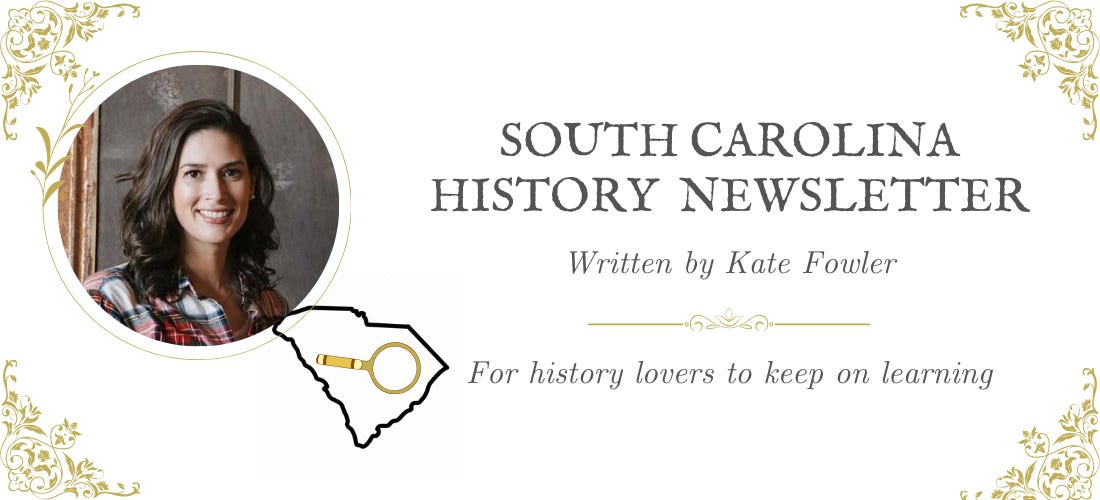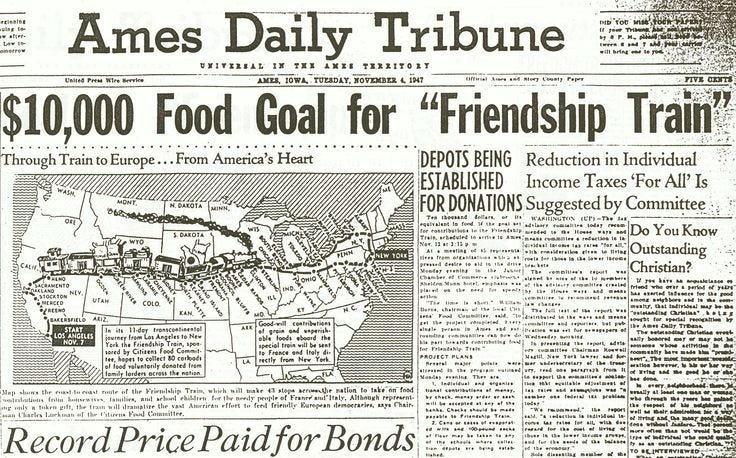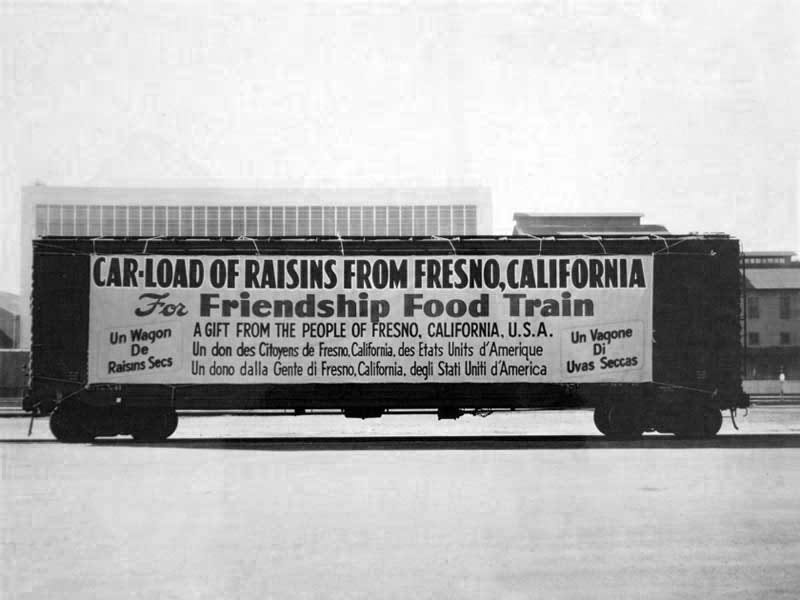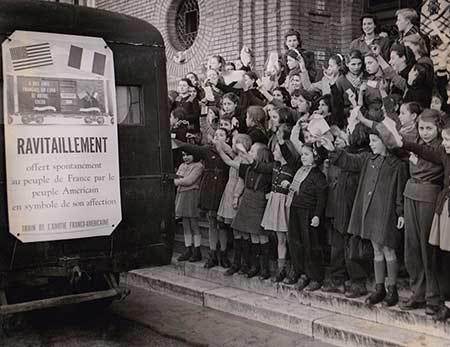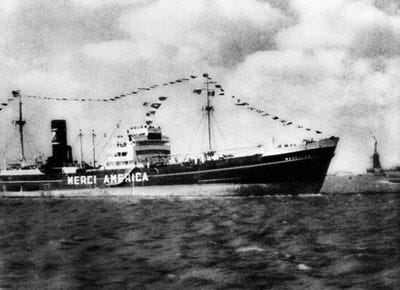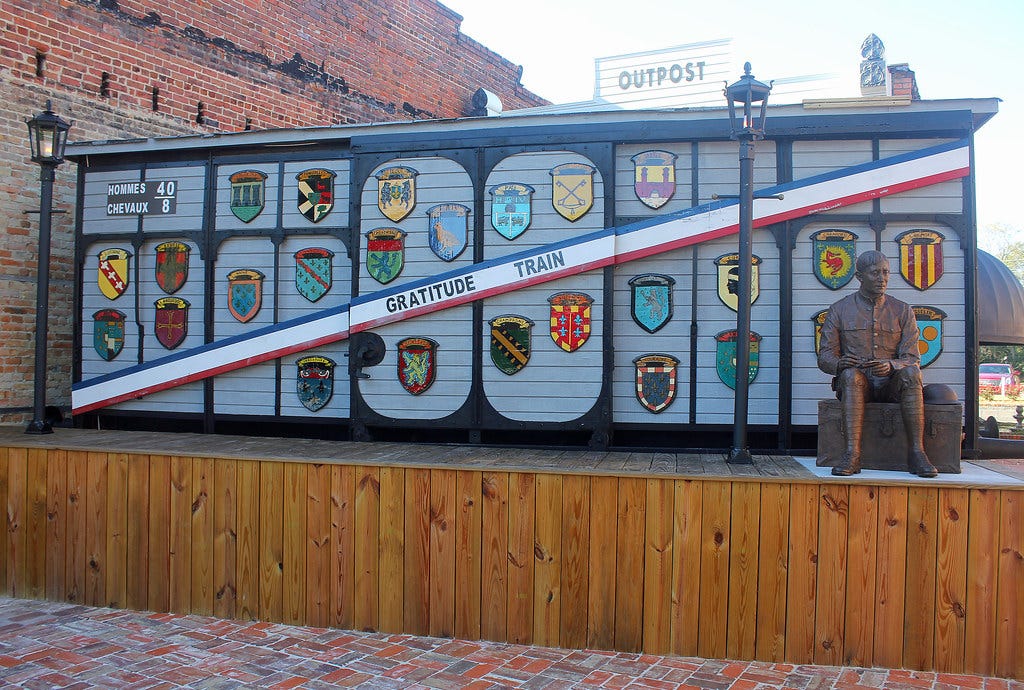#48: Frogmore Stew, the "Merci" Train, and an archaeology camp for kids
For South Carolina history lovers far and wide! Enjoy weekly SC history and upcoming SC historical events
Dear reader,
Welcome to Newsletter #48 of The South Carolina History Newsletter! I’m so happy you’re here.
I’d also like to welcome some new subscribers below!
monalisapermenter
siujdl
happyme23
ttsscmb
kathymcclune
vogue_whit
rays75
trawrightt
sandlaine
dls1149
I hope you enjoy today’s newsletter, and as always, please feel free to reply to this email with your ideas and suggestions on South Carolina history you’d like to learn more about. I’m only a click away.
Additionally, please join us & keep the conversation going by becoming a member of our SC History Newsletter Facebook Community here! I can’t wait to meet you.
And now, let’s learn some South Carolina history!
Yours truly,
Kate
(Writing from Greenville, SC)
➳ Featured SC History Event
Please enjoy our featured SC History Event below, and click here to visit my SC History Events Calendar that organizes all the upcoming SC history events I have discovered. Please let me know if you’d like to add an event to the calendar! Reply to this email or send me a note at schistorynewsletter@gmail.com.
August 5-9, 2024 | “Summer Archaeology Camp for Kids” | Coastal Discovery Museum | Hilton Head, SC | $425 per participant
“Come help our staff archaeologist build Honey Horn history from the ground up and develop your scientific skills along the way. This summer, rising 5th-7th graders can join us in our discovery adventure for a week in the dirt. Camp participants will learn the basics of archaeology, including hands on experience excavating, washing and sorting artifacts, searching through archival documents, and analyzing results. This week-long day camp will help students develop their critical thinking and creative skills while exploring the deep history of Hilton Head Island. At the end of the week our campers will finish out their experience with a presentation of their findings for staff, family, and friends.”
➳ SC History Fun Facts
I.
Did you know that the “Merci Train” was an important symbol of post-WWII relations between America and France — and one of the Merci train boxcars is on display in Bishopville, SC?
In 1947, a Washington Post journalist Drew Pearson had a big and impactful idea that would touch the hearts of American citizens across the United States, and throughout our home of South Carolina. In the aftermath of WWII, Pearson wrote articles on food shortages in Europe, and France in particular, and was gravely concerned. While the U.S. Congress had donated “thousands of tons of food and supplies to Western Europe in the early post-war era,” Pearson (and others) feared that these donations did not have “purely humanitarian motives, but instead represented just a calculated move to combat the communist infiltration of Western Europe.”
Pearson conceived of a grand humanitarian gesture towards France and its Western European neighbors, whereby aid would not be given by the government, but directly by the American people. Pearson proposed the idea of a “Friendship Train” in his daily column "The Merry-Go-Round” — and other newspapers around the U.S. took up the cause. The Friendship Train would cross the United States from West to East, and collect gifts along the way from the American people to the French people and other countries of Western Europe. Organized outside of any “government agenda,” the train was to represent America’s genuine concern and desire to help.
(Note from Kate: I was unable to find a photo of South Carolina’s railcars of supplies, but I will keep looking. I was charmed though, by the Arkansas and California cars above.)
Starting in Los Angeles on November 7th, 1947, The Friendship Train began its historic journey across America. When the train arrived in South Carolina, the upstate contributed “four carloads of food and clothing to the national train.” The leader of this effort was Greenville insurance executive Broadus Bailey, who coordinated the region’s collection with the assistance of local veterans’ groups. Using local newspapers and radio stations, Bailey and his associates “solicited funds from schools, churches, women’s clubs, and the Grange.”
Aiken, Columbia, St. George, Kingstree, and other cities also contributed. One of the largest local efforts was undertaken by Charleston, which “adopted the village of Flers-de-l’Orne in Normandy.” Charleston’s director of Promotional Development, J. Francis Brenner, led the campaign with Mayor William McG. Morrison’s full support. Civic organizations, schools, churches, and businesses from the area contributed food, clothing, and funds that were collected at city fire stations.
The original plan for The Friendship Train was to collect 80 train carloads of food. The outpouring of support from the American people was so profound that the train ultimately collected over 700 cars ($40 million value) of food, clothing, and fuel, paid in part by monetary donations. Each parcel that was distributed in Europe was accompanied by a personal message of the American donors:
"On compte dans ce vaste creuset qu'est l'Amérique, bien des races différentes, et bien des fois religieuses. En un esprit de bonne volonté démocratique et chrétienne, nous, Américains, avons travaillé pour envoyer dans vos foyers ces produits de nos champs. Nous espérons qu'ils vous aideront jusqu'au jour où vos moissons seront à nouveau abondantes et belles.”
(Translation: "In this vast melting pot that is America, there are many different races, and many religious faiths. In a spirit of democratic and Christian goodwill, we Americans have worked to bring these products from our fields to your homes. We hope they will help you until the day when your harvests will be abundant and beautiful again.)
The Friendship Train of 700 boxcars of food, fuel, medicine, and clothing left on a ship from New York City and arrived in France on December 18, 1947.
Once The Friendship Train arrived in France, it was not long before the French people started a campaign to show their appreciation. The man who would lead the effort was a French veteran and employee of its rail system, Andre Picard. Mirroring The Friendship Train, he hoped to “promote a plan for his countrymen to fill one boxcar with French-made articles.” Once Picard’s plan began to “circulate in cafes and communities” across France, it quickly outgrew his original idea. In fact, the project became so large that soon the National Headquarters of the French War Veterans Association assumed responsibility and expanded the plan. Soon, the plan was proposed to fill 49 boxcars with gifts from citizens all over France, one boxcar for each of the 48 U.S. states, with the 49th to be shared between the District of Columbia and Hawaii.
Donations from the Merci Train came from “over 6 million citizens of France and Italy in the form of dolls, statues, clothes, ornamental objects, furniture, and even a Legion of Honour medal purported to have belonged to Napoleon.” Many items were personal family “treasures” such as children’s rough drawings, ashtrays made of broken mirrors, and wooden shoes. More highly crafted gifts given by dignitaries and organizations included works of art such as “Benjamin Franklin’s bust by the great French sculptor, Jean Antoine Houdon, 50 rare paintings, and—from the Society of Parisian Couturiers—49 hand crafted dolls.” A very heartfelt offering came from a disabled veteran who had carved a “gavel out of a tree that came from the World War I battlefield of Belleau Woods.”
In all, 52,000 packaged or crated gifts were packed into the 49 “forty and eights” boxcars and shipped to Amerca. Used as freight boxcars, “forty and eights” were originally used in military service by the French army in both World Wars, and then later used by the German occupation in World War II and finally by the Allied liberators. They were called "forty-and-eights" in reference to their carrying capacity, said to be “40 men or eight horses.”
The shipment back to America became known as The French Gratitude Train (French: Train de la Reconnaissance française), commonly referred to as the Merci (“Thank you”) Train. The shipment arrived in Weehawken, New Jersey on February 2, 1949. The Train and all 49 cars arrived aboard the Magellan on February 2, 1949, with over 25,000 onlookers in attendance. On the side of the gift-laden French freighter was painted, "MERCI AMERICA." (“THANK YOU AMERICA”).
As the Merci Train Boxcars arrived in America and were distributed amongst the states, there was much excitement, but also confusion as to who would be allowed to receive and accept the Boxcars and items within them from France. Before South Carolina’s Merci Boxcar arrived in February 1949 in Spartanburg’s railway station, “jealousy and hard feelings between local leaders and veterans groups had already begun as they argued over who should accept and control the car.”
Greenville businessman Broadus Bailey (mentioned above) had spearheaded the Greenville participation in the national Friendship Train. Based on his and his associates’ efforts to assist Pearson’s national effort, Bailey argued that he and the local Greenville veterans’ chapters were the only ones in the state with the “right” to take custody of South Carolina’s Merci Boxcar. Drama ensued, and soon embroiled Governor Strom Thurmond. Community leaders and organizations in many parts of the state wanted to know how they might have the car routed through their town. Thurmond received many letters from citizens with interest in the Merci Boxcar. The Garden Club of Latta wrote Thurmond more than a month before the Merci car arrived in South Carolina requesting a “tree” from the car. In nearby Bennettsville, State Senator Paul Wallace solicited on behalf of the local French Sans Souci Club “one of these gifts” from the French.
Once the dust settled and its tour ended, the Merci Boxcar returned to Greenville and was displayed at McPherson Park for over 30 years. Over time it began to deteriorate and by the 1970s was in really “bad shape.” In 1973, the local Auxiliary Unit 3 of the American Legion took on the job of restoring the car and had it moved to Cleveland Park, also in Greenville. By the end of the next decade, the Boxcar had fallen into neglect once more. In the early 1990s, local American Legion members decided that the Boxcar needed a new home and offered it to the recently opened State Museum in Columbia. That offer was declined. The Merci Boxcar was housed for a time in Columbia, behind the American Legion post on Pickens Street. And now it is “nestled in between several shops” in downtown Bishopville, SC at Memorial Park.
Most modern onlookers might not fully understand the significance of this colorful train car, but now we can know that it symbolizes a remarkable moment in American history and in Franco-American relations after WWII.
II.
Do you know how Frogmore Stew got its name?
Frogmore Stew is a signature dish of South Carolina and is also referred to as Lowcountry Boil. The dish has deep roots in the coastal region of South Carolina and “embodies community, friendship and the delight of shared meals.”
The name and original recipe for the seafood-based dish is attributed to a local shrimper named Richard Gay, of Gay Fish Company, who is said to have “coined the name in the 1960’s after his hometown, Frogmore, a small community on St. Helena Island, South Carolina.”
The ingredients, techniques and communal spirit that surround Frogmore Stew are rooted in the culinary traditions of the Gullah-Geechee people of the Lowcountry. The Gullah-Geechee people are a distinct African-American cultural group residing in the coastal regions of South Carolina, Georgia, and Florida, known for preserving unique language, traditions and heritage stemming from their West African roots. To sustain the traditions of their communities, they adapted their ancestral cooking techniques to the local seafood and produce that was readily available.
While there are many different variations of this popular one-pot feast, Frogmore Strew traditionally features 4 primary ingredients boiled together in a large pot: fresh shrimp, corn on the cob, potatoes, and smoked sausage. Frogmore Stew is drained and typically served on a platter — or on a newspaper-covered table for easy cleanup —making it the ideal family-friendly dish for your next get-together.
The recipe below has been featured by Francine Maroukian in Garden & Gun magazine. Enjoy!
Frogmore Stew: The Lowcountry in One Pot
Ingredients:
1/2 cup (at least) Old Bay Seasoning
16 small new potatoes, about 1-inch diameter, rinsed but not peeled (about 3/4 lbs.)
1/2 lb. smoked sausage (kielbasa), cut into 16 1/2-inch thick coins
2 medium sweet onions, peeled but not trimmed, quartered lengthwise from stem to root
3 ears fresh corn, shucked and cut into thirds
16 largest available fresh shrimp, preferably white Carolina shrimp with head on (you may want more depending on size of shrimp)
8 stone crab claws (about 2 lb.)
Preparation:
Bring a large stockpot (at least 12-quart) of water (filled 2/3 of the way, about 9 quarts) to a simmer. Add Old Bay and simmer to infuse. (The water should be abundantly seasoned and aromatic.)
Add potatoes, sausage coins, and sweet onions, and bring to a lazy simmer until potatoes are fork tender, about 15 to 18 minutes.
Keeping water at a lazy simmer, add corn, and cook until kernels are slightly softened, about 3 minutes. Add shrimp and crab claws and cook until the shrimp becomes pink and white (instead of opaque), about 5 or 6 minutes. Strain solids from cooking liquid and transfer them to an oversize platter.
Serve with soft butter and olive oil (for potatoes and corn), sea salt, Tabasco, and cocktail sauce. Lemon wedges and chopped hot peppers (like jalapeño) are also sometimes served as accompaniments.
➳ Quote from an SC historical figure
I.
“France stood by us a long time ago. And I say today ‘Viva [sic!] La France, Long Live France!’”
—Said by Governor Strom Thurmond in February 1949 at the arrival of the South Carolina Merci Boxcar at the Spartanburg railway station.
Sources used in today’s newsletter:
I always want to improve my work. Answer the poll below to give me your review of today’s newsletter. I also welcome your suggestions for new content! Simply reply to this email with your ideas. Thank you!




